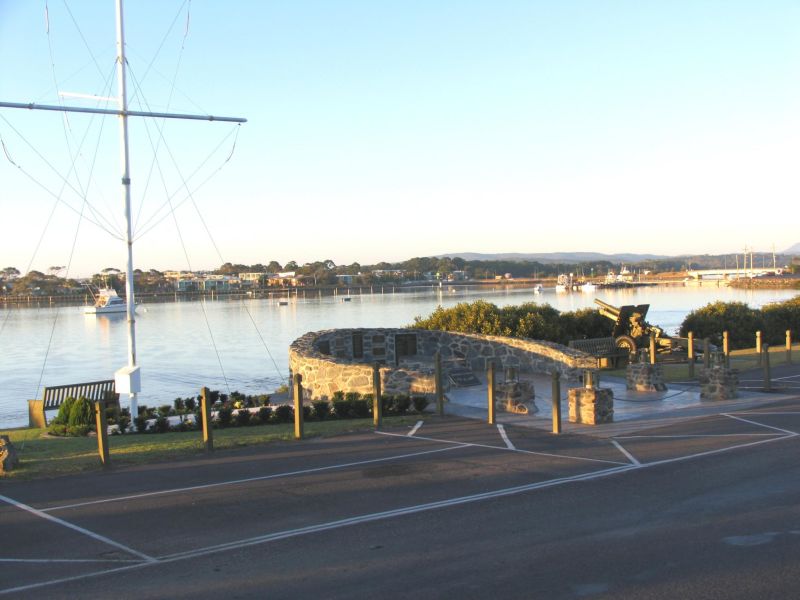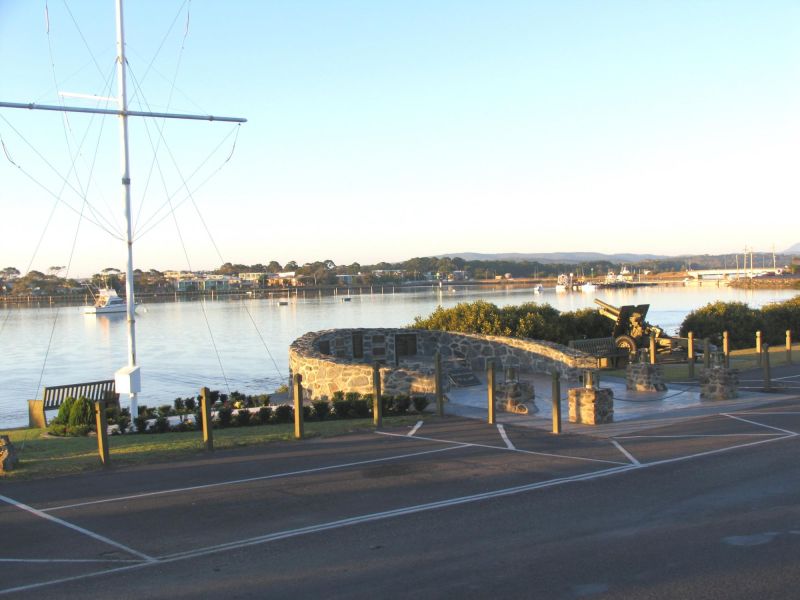The Beach Street War Memorial
First built in 1982 by sub-Branch members.
It was designed to signify a wave coming into ANZAC Cove Beach at Gallipoli.
The simulation of the wave idea was carried on in 1997 when the Memorial was upgraded. The improvements to the Memorial costing twenty two thousand dollars. Two thousand nine hundred & forty eight dollars coming from the Department of Veterans Affairs, under the Memorial Grants program and three thousand dollars from the Bega Valley Shire Council Community improvement fund. The rest of the cost coming from sub-Branch funds.
The project employed local sub contractors, with many hours of volunteer work from sub-Branch members.
The additions in 1997 were the forecourt area, the four stone cairns with lights, the tiling, the path around the memorial and re pointing of the stone wall. In addition to this a new Flag Pole surrounded by gardens, 14 stanchions (posts) and two seats were added to the Memorial.
The forecourt represents the Anzac Bridge Head at Gallipoli.
The 14 Stanchions represents the perimeter lines established.
The Flag Pole and gardens represents the Beach Head - Head Quarters.
The lights on each of the Cairns when lit at night represents the lights from the trench lines of the Bridge Head.
The two seats signify boats bringing troops.
Each stone Cairn has a marble plaque at its base representing each of the Services. One Cairn has been fitted with a time capsule to be opened at the ANZAC Day Service in 2050. , .
The capsule contains a book on the History of the Anzac Theatres of War, history of the Merimbula sub-Branch, memorabilia from 1997 and some coins.
The 25 Pounder Field Gun was the mainstay of the Artillery units of the Australia Army from 1940 to 1975. Over 2,000 were taken into Australian service, three quarters being manufactured in Australia.
The 25 Pounder was first used by the Australian Forces in December 1940. These guns served through campaigns in North Africa, Syria. Greece, Malaya, New Guinea, the Pacific Islands and Vietnam.
The Gun was an icon in front of the old RSL Club Building. When the building was sold in 1996 the gun was moved to its current site at the War Memorial and still remains a point of interest to families visiting the area.

 Merimbula RSL Sub-Branch
Merimbula RSL Sub-Branch